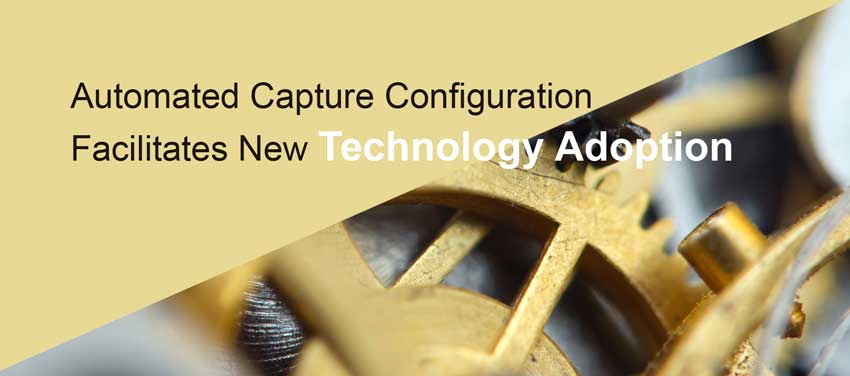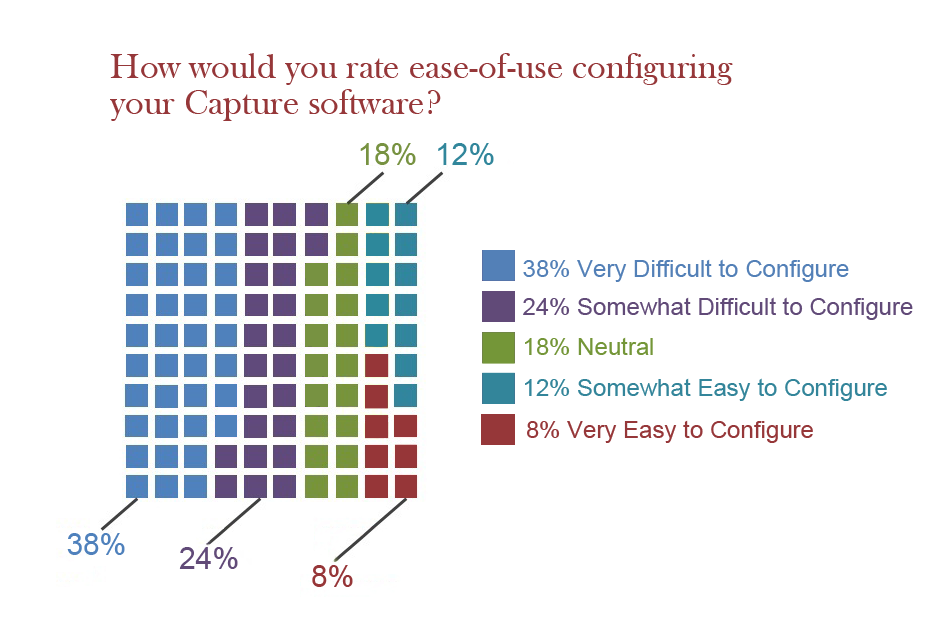Developing a deployment process that is relatively painless is more important than ever in the age of disruptive software that has made activities like flagging a cab, buying CDs and going to the mall unnecessary. As consumers, our mindset as a society has shifted.
As a rule, we have less tolerance for inefficient apps and unwieldy processes. We bring the same expectations to our work environments and expect our businesses to adopt technologies that will make our jobs easier, faster and more interesting so we have time to develop new strategies, operate at higher levels and expand into additional markets.
In a recent survey of over 100 managers who oversee document processing in June 2017, AIIM found that 38 percent of respondents rated their capture software very difficult to configure with 24 percent rating it somewhat difficult to configure.
When 62 percent of respondents find software configuration somewhat to extremely challenging, that’s a red flag. When software gets a failing grade in terms of configuration, technology adoption will be resisted not only by the IT team, but also by Operations. Capture configuration requires the initial set up of classification and data extraction rules. And then, the capture system must be measured and tuned to ensure that results are producing high quality extracted data.
Today, enterprises are looking to automate not only repetitive manual tasks, but any labor-intensive activities such as configuration whether or not they are highly repetitive or done less-often. Often difficulties or costs associated with configuring and maintaining capture software are still perceived as greater than the challenge of the data extraction task itself. This has led to continued reliance on manual data entry and verification despite executive leadership being open to and exploring automation options.
Toward an Automated Configuration Scenario
Increasing efficiency and eliminating errors are essential to any successful configuration scenario. Moving away from a fully manual process toward configuration automation will help ensure that error prone tasks are eliminated from the workflow. Automating capture configuration provides three major benefits:
- Improved accuracy at a faster processing speed. Transforms a basic existing document imaging or capture process into a much more advanced, less time-consuming and more accurate automated data extraction system.
- Decreased dependency on tedious manual verification. Automating initial set up of classification and data extraction rules as well as system measurement and tuning requires minimal SME oversight. More importantly, when capture automation demonstrates high quality data results, adopting the technology becomes much more palatable because it “justifies” itself—providing metrics that surpass labor-intensive data entry task results. Roadblocks to technology adoption are naturally removed.
- Ability to set-and-forget. When the capture system configures and monitors itself, then those tasked with managing the system or using the results can focus on other more-important activities that require higher level analytical skills and creativity.
Regardless of business executives’ frustration with their low-end capture engines and high-cost manual data entry processes, advanced capture systems are unlikely to be widely adopted until they address configuration challenges that require automation of initial set up of classification and data extraction rules.
Measuring and tuning the capture system must also undergo automation so that the system continues to classify, locate, extract and verify data with great accuracy over time. This is challenging in a dynamic production environment where documents and images continually change and new types are added to the system.
If you found this interesting, check out our latest eBook on data quality:



